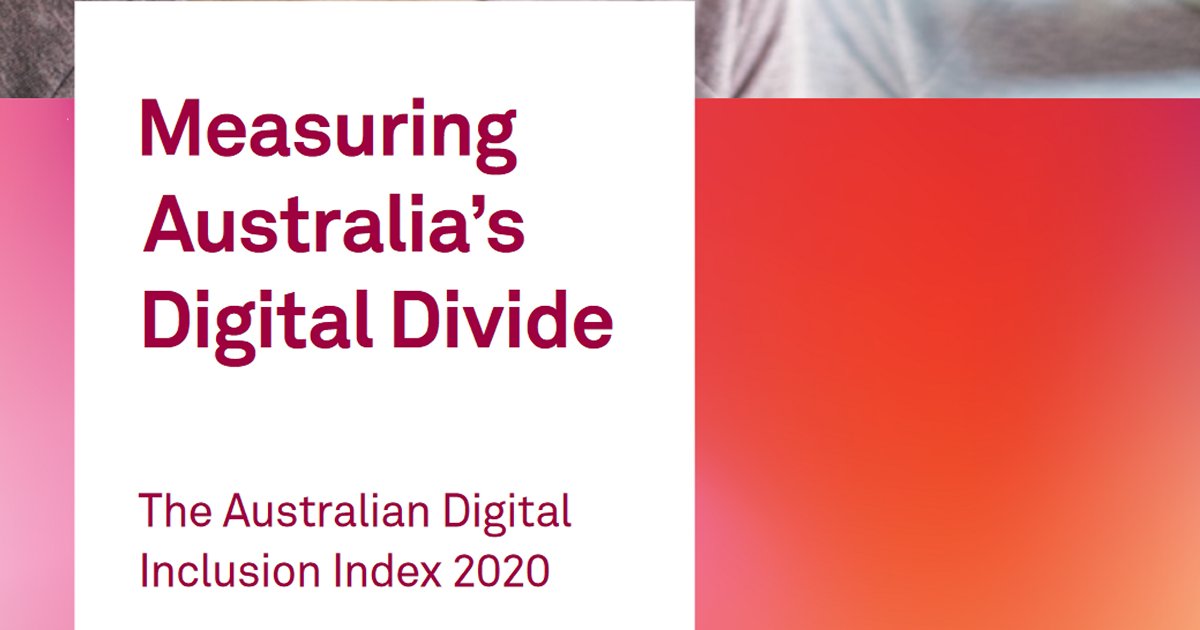The fifth Australian Digital Inclusion Index (ADII) indicates that although digital inclusion is improving in Australia, the rate of increase is slowing - and the gap is widening for some groups.

The ADII measures three key dimensions of digital inclusion - Access, Affordability, and Digital Ability; with scores provided for each. Each dimension has multiple components. For example, for Affordability, the two components are:
- Relative Expenditure: share of household income spent on internet access.
- Value of Expenditure: total internet data allowance per dollar of expenditure.
Scores are benchmarked against what is termed a ‘perfectly digitally included’ individual, someone who scores in the highest range for every variable. This person is hypothetical and rare in reality, but offers a useful basis for comparison.
The overall ADII score in the first year of the Index (2014) was 54.0. This year it has reached 63.0 - +1.1 on 2019. That increase was the lowest since 2015 and increases have been narrowing since 2018.
Australians with lower levels of income, employment, and education are generally significantly less digitally included and Australians aged 65+ remain the country's least digitally included age group.
Digital Ability And Affordability Issues Persist
With the NBN now substantially completed and impacts of the COVID-19 pandemic becoming clearer, the report states Digital Ability and Affordability are critical areas for attention.
"Collaboration across business, the not-for-profit sector, and government will be needed to improve outcomes for vulnerable communities," it states.
With regard to affordability specifically, while cost per gigabyte of data continues to fall, Australians are spending more time online; using more data intensive applications and connecting an increasing number devices to the internet. This has resulted in the proportion of household income spent on internet services rising from 1.0% in 2014 to 1.18% in 2019, but it fell just a touch between 2019 and 2020 to 1.16%.
But for low-income households, the impact is more significant, with the proportion of household income spent by those living in the lowest household income quintile having increased every year since 2014. It now exceeds 4%.
In terms of Digital Ability, which includes an "Attitude" component, the score rose annually between 2014 and 2019 (from 45.9 to 51.2), but it fell slightly in the past year to 50.3.
"Less than half of all Australians believe that computers and technology give them more control over their lives and less than 40% feel they can keep up with a changing technological landscape," states the report.
And given the pace of change, that's entirely understandable.
The full fifth Australian Digital Inclusion Index can be downloaded here.



